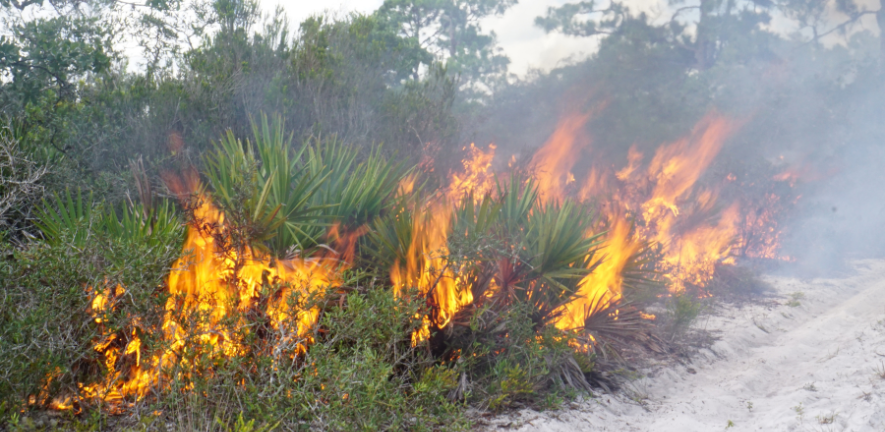
Submitted by Jane Durkin on Thu, 19/12/2024 - 05:34
A study into global wildfires and ecosystem water cycling has shown for the first time the large-scale effects of fire on plant and soil water dynamics.
The research team from the University of Cambridge used microwave satellite datasets to observe the effects of fire on plant and soil water content across the globe.
They found that fire fundamentally changes how ecosystems work, increasing overall water loss and shifting the relationship between plant and soil water budgets.
The work demonstrates that the effect of fire on plant-soil water use can be detected on kilometre scale and is significant enough to be included into ecosystem models.
The findings also provide an important basis for further research to help inform the management of burned areas.
The research was published in Nature Geoscience on 7 November 2024.
Understanding plant-soil water relations after fire
This study shows that fire has a significant effect on plant and soil water cycling, accelerating soil moisture loss by 17% and leading to faster gains in plant water content by 62%.
Plants become more ‘greedy for water’, growing more rapidly and taking up water faster than before. They also tend to have less control over their water content.
These differences are probably due to fire-related changes in plant composition and plant regeneration mechanisms like re-sprouting.
Fire changes ecosystems quickly at scale
Until now, most research on wildfires has focused on what happens before a fire. It is well known, for example, that drought conditions lead to larger and more severe fires.
Less is known about how soil and plant water content behave after a fire. Yet fires can change ecosystems on a wide scale and at speed – often many square kilometres in just a few days.
Wildfires are also becoming more intense and severe with climate change. In many areas the average burned area has been increasing each year over the last decades, and fires burn faster, hotter and often more destructively.
Understanding the effects of fire on plant and soil water dynamics could help predict whether an ecosystem will recover after a fire or transition to another state.
Dr Adam Pellegrini, head of the Ecosystem and Carbon Science group at the Department of Plant Sciences and co-author of the paper, said “Much work has been done identifying how water controls wildfire occurrence and intensity, but this study shows the water-fire relationship is a two-way street. The elevated water losses have important implications for future vulnerability of ecosystems to fire because they dry out more quickly.”
Microwave remote sensing – a novel approach in fire science
The study is one of few in the field of fire science to employ data from microwave remote sensing to analyse the impact of wildfires around the world.
Microwave satellites observe emissions in the microwave spectrum from the Earth’s surface. Like microwave ovens, the satellites are sensitive to water in objects, so the satellite can measure and interpret how much water is in the soil and vegetation.
The team analysed data for areas that have experienced wildfires between April 2015 and December 2020, comparing soil and plant water content for the 30 days after a fire with pre-fire years.
They are now looking at extending the research by using higher resolution datasets for certain areas. This will allow them to understand the global results better and uncover which other factors might play a role in the findings.
The value of cross-disciplinary collaboration
The project is a collaboration between researchers in the Departments of Geography and Plant Sciences at the University of Cambridge – all also members of the Cambridge Conservation Research Institute.
Martin Baur, PhD student in Geography and first-author of the paper, said “To me this project is a great example of how being collaborative and reaching out to other academics in Cambridge can lead to interesting work. It started with me emailing co-author Adam Pellegrini and us discussing ideas sitting outside the Plant Sciences department during Covid. Combining our different backgrounds and perspectives we have been able to identify and focus on an aspect that hasn't been researched much before.”
Reference: Baur, M.J., Friend, A.D., Pellegrini, A.F.A. Widespread and systematic effects of fire on plant–soil water relations. on Nature Geoscience 17, 1115–1120 (2024). https://doi.org/10.1038/s41561-024-01563-6
Image: Prescribed burning to maintain scrubby flatwood habitat at Archbold Biological Station, Florida, USA. Photo by Courtney Currier.
